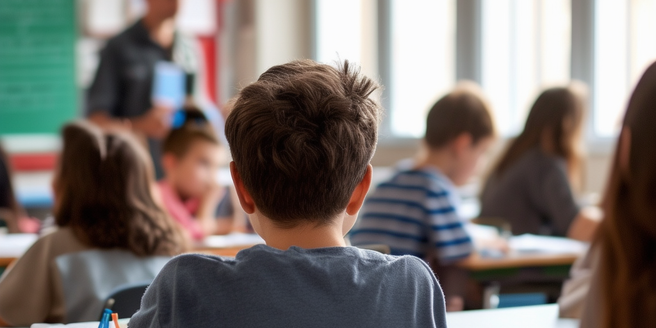
Understanding the Impact of Peer Pressure on Students
Peer pressure can significantly influence students’ choices and behaviors, affecting their academic performance, social interactions, and self-esteem. It can cause students to alter their study habits, either improving or worsening their grades depending on the nature of the influence. Peer pressure can impact their relationships with friends and family, leading to either more positive or more negative interactions. Additionally, the pressure to conform to group norms can either bolster a student’s confidence or erode their sense of self-worth.
Acknowledging peer pressure’s role in a student’s life is essential for parents, teachers, and peers. They must be vigilant in observing changes in behavior that might indicate a student is under pressure. Understanding that it can be both positive and negative helps in implementing supportive measures. For example, encouraging healthy group activities can lead to positive peer pressure.
Creating a safe space for students to share their thoughts without fear of judgment allows them to process and understand their experiences better. Parents and teachers should actively listen and offer guidance, helping students navigate social pressures effectively. Building strong, trusting relationships ensures that students feel supported and are more likely to make decisions that align with their values.
Identifying Different Types of Peer Pressure
Peer pressure comes in various forms, including direct, indirect, and self-imposed pressure. Direct peer pressure involves explicit encouragement or coercion from peers to engage in specific behaviors. Indirect pressure is subtler, involving the desire to conform to the group’s norms without direct verbal prompts. Self-imposed pressure arises when individuals anticipate how peers might judge their actions and adjust their behaviors accordingly. This type of pressure can be just as influential as the others. Understanding these distinctions is crucial for effective intervention. Recognizing these types helps in developing appropriate strategies to cope. Awareness of these dynamics is essential for navigating social situations. With the right awareness, individuals can learn to resist negative influences and make healthier choices.
Strategies for Building Self-Confidence
Building self-confidence is key to resisting negative peer pressure. It plays a critical role in helping individuals make independent decisions and stand firm in their beliefs. Encouraging students to set and achieve personal goals, recognize their strengths, and engage in positive self-talk can enhance their self-esteem. When students are guided to identify their interests and passions, their confidence in their abilities naturally grows. Providing opportunities for them to succeed in various activities, from academics to extracurriculars, reinforces their sense of competence and exposes them to diverse experiences where they can showcase their skills, further boosting their confidence.
Furthermore, it is beneficial to create an environment where students feel valued and understood. Conversations about their achievements, as well as their challenges, can help them reflect on their journey and develop resilience. By witnessing confidence in action, students learn to emulate these behaviors in their own lives. Praise should be specific and genuine, highlighting both the effort and the outcome, as it helps to build a realistic sense of self-worth. Such a supportive framework can significantly contribute to their ability to resist negative influences and make positive, self-affirming choices.
Effective Communication with Peers and Adults
Effective communication skills are vital for navigating peer pressure. Teaching students to express their thoughts and feelings assertively, rather than passively or aggressively, helps in maintaining healthy relationships. This assertiveness empowers students to stand up for themselves without causing conflict, striking a balance between being too submissive and too forceful. Encouraging active listening fosters mutual understanding. When students actively listen, they are more likely to comprehend the perspectives of their peers, leading to more meaningful and respectful interactions. Moreover, empathetic responses show that they value others’ feelings and opinions, which can strengthen bonds and reduce the likelihood of succumbing to negative influences.
Creating an environment where students feel comfortable seeking advice from adults can provide them with the support and guidance they need to handle peer pressure challenges. This supportive atmosphere can be cultivated by ensuring that adults are approachable and willing to listen without judgment. Regular discussions on the importance of making informed choices and the potential consequences of yielding to peer pressure can further reinforce their resolve to make good decisions. Thus, the combination of assertive communication, active listening, and a supportive environment equips students with the tools they need to effectively manage peer pressure.
Creating a Supportive School Environment
A supportive school environment plays a crucial role in mitigating the effects of peer pressure. Such an environment helps students feel safe and accepted, reducing the influence of negative peer behaviors. Schools can promote a positive culture by emphasizing respect, inclusivity, and kindness through regular activities, campaigns, and assemblies that encourage mutual respect among students.
Implementing programs that address social and emotional learning helps students develop the skills needed to navigate peer interactions. These programs can include lessons on self-awareness, self-management, social awareness, relationship skills, and responsible decision-making. Additionally, these programs often involve collaborative projects and discussions that foster a deeper understanding of one’s own emotions and those of others, which is critical in resisting peer pressure.
Providing access to counselors and peer support groups offers additional resources for students struggling with peer pressure, ensuring they feel valued and understood. Counselors can provide individual or group sessions designed to tackle specific issues related to peer pressure, while peer support groups can offer a platform for students to share their experiences and strategies for coping. By taking a holistic approach, a supportive school environment can significantly reduce the negative impact of peer pressure and promote overall student well-being.
